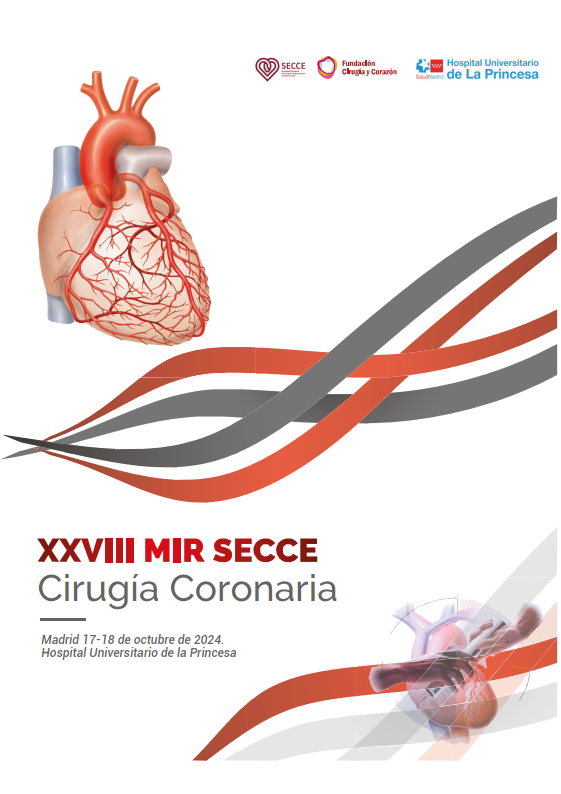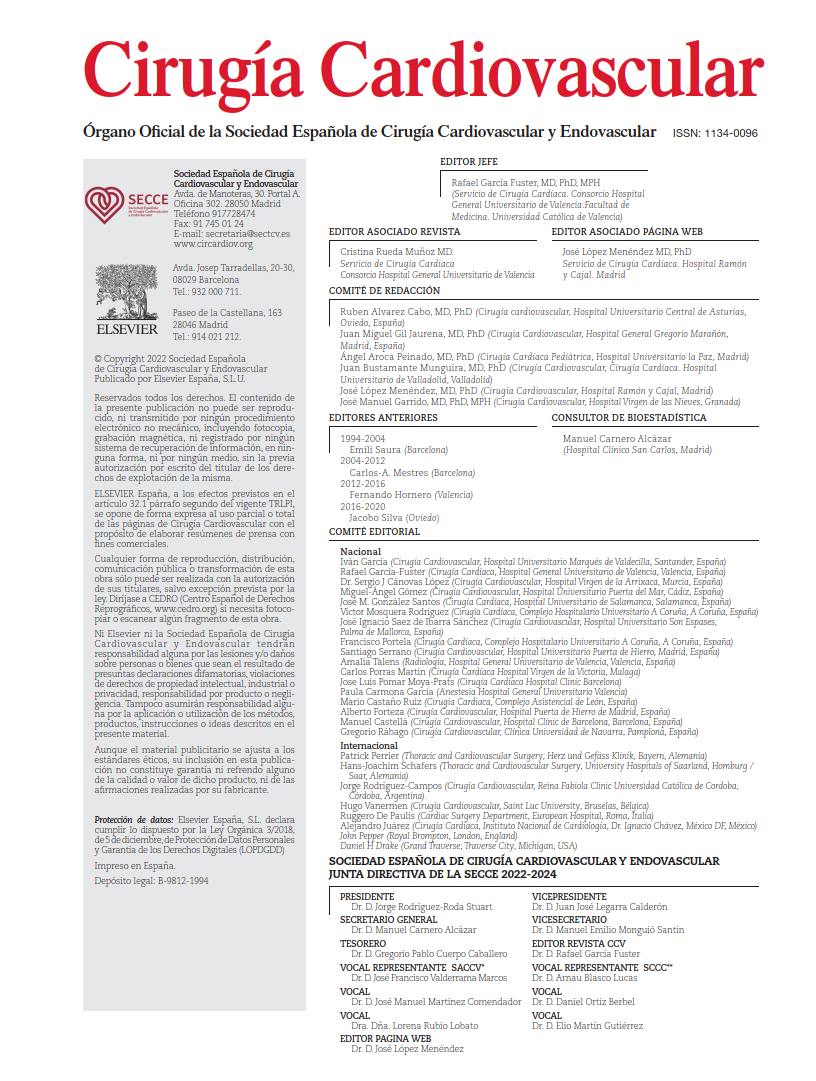In recent years, transfemoral TAVR has been established as the preferred treatment in high-risk patients with symptomatic severe aortic stenosis (AS). Although observational data have demonstrated that moderate AS is not a benign condition and is associated with increased mortality and cardiovascular events, current guidelines still recommend clinical surveillance in this scenario. Presently, the only clear recommendation for managing moderate AS is valve replacement in patients undergoing cardiac surgery for another indication, carrying a Class IIb recommendation.
Both AS and ventricular dysfunction are highly prevalent in elderly patients and frequently coexist. In this population, it is often difficult to determine whether ventricular dysfunction is primarily due to valvular disease or related comorbidities. Furthermore, patients with left ventricular dysfunction typically have increased afterload, and in this setting, the hemodynamic burden of moderate AS may resemble that of severe AS in patients with preserved left ventricular ejection fraction (LVEF). Currently, there is scarce evidence on the use of TAVR in this clinical context, although several ongoing trials aim to evaluate whether early intervention may offer clinical benefits in patients with moderate AS.
This is the rationale behind the TAVR UNLOAD trial, an open-label, international, randomized controlled study designed to assess whether transfemoral TAVR with a balloon-expandable valve plus optimal medical therapy provides clinical benefit in patients with moderate AS and ventricular dysfunction. Patients were eligible if they had heart failure with reduced ejection fraction (specifically, LVEF between 20% and 50%) and moderate AS and were suitable candidates for transfemoral TAVR. A total of 178 patients were enrolled and randomized 1:1 to TAVR or clinical surveillance (CASS), with 89 patients allocated to each group. Baseline characteristics were well balanced between the arms: the mean age was 77 years, 21% were women, the mean LVEF was 39%, and approximately 75% had coronary artery disease. Notably, nearly half had a history of prior myocardial infarction.
TAVR was performed in 99% of patients assigned to the intervention group (88 patients), while 38 patients in the CASS arm (43%) underwent TAVR during follow-up—most (35 patients) due to disease progression to severe AS. The primary endpoint was a hierarchical composite consisting of all-cause death, disabling stroke, disease-related or heart failure-related hospitalization, and changes in Kansas City Cardiomyopathy Questionnaire (KCCQ) scores. The primary analysis used the win ratio, calculated by dividing the number of favorable outcomes in the TAVR group by those in the CASS group.
The win ratio for the primary endpoint was 1.31 in favor of TAVR, but the difference was not statistically significant. Similarly, no significant differences were observed in the individual components of the primary outcome, including all-cause mortality. In the TAVR group, mean LVEF improved from 39% to 44%; however, a similar improvement was also seen in patients who did not undergo TAVR, suggesting that medical therapy may have driven these changes. In the CASS group, 16 patients progressed to severe AS in the first year, 13 more within 2 years, and another 5 before 3 years of follow-up. While quality-of-life scores improved significantly in the TAVR arm compared with CASS, these differences diminished after the first year.
COMMENTARY:
The TAVR UNLOAD trial is the first randomized study to evaluate the benefits of TAVR in patients with moderate AS and ventricular dysfunction. No statistically significant differences were observed compared with conservative management in hard outcomes such as mortality or hospitalizations. However, these results must be interpreted with caution, as nearly half of the patients in the clinical surveillance group eventually underwent TAVR during follow-up (specifically 43%), introducing a crossover bias that may dilute differences between groups and underestimate the treatment effect. In other words, a substantial proportion of patients initially assigned to the control group ultimately received the intervention. Nevertheless, since the analysis was performed according to the intention-to-treat principle, any clinical or quality-of-life benefit resulting from TAVR in these patients is reflected within the control arm, limiting the study’s ability to detect statistically significant differences between strategies.
Moreover, most crossovers occurred due to progression of AS severity or increased hospitalizations, potentially attenuating the benefits of early TAVR observed in the intervention arm. It is worth noting that the differences in quality-of-life scores tended to diminish after the first year of follow-up. A subgroup analysis excluding control patients who ultimately received TAVR showed a more pronounced and sustained improvement in KCCQ scores favoring early intervention.
Importantly, the study demonstrated that early intervention was safe. Despite the high-risk profile of the population—with more than half in NYHA functional class III/IV and intermediate surgical risk—procedure-related complications were infrequent and consistent with prior TAVR trials. Interestingly, the observed event rates were higher than those previously reported in registries of patients with moderate AS, likely reflecting the older age and more advanced disease phenotype in this cohort. These patients also had a high burden of comorbidities (particularly ischemic heart disease and related risk factors), which may have contributed to the absence of significant differences in mortality with the invasive strategy.
The study also documented a faster-than-expected progression of valvular disease compared with previously published evidence, supporting the hypothesis that closer echocardiographic monitoring may be beneficial to detect early disease progression in this patient population.
The trial has several notable limitations. First, it lacked statistical power to detect significant differences, rendering its findings hypothesis-generating rather than confirmatory. Additionally, the only outcome showing statistical significance was quality of life, a subjective measure that may be influenced by placebo or Hawthorne effects in an open-label trial like TAVR UNLOAD. Lastly, due to challenges in patient recruitment, the study protocol underwent modifications, including a reduced sample size and extended follow-up duration.
Despite these results, the authors concluded that although TAVR did not yield statistically significant differences in the primary hierarchical outcome in patients with moderate AS and ventricular dysfunction, the findings suggest that early transcatheter valve implantation is safe and may offer significant improvements in quality of life in this population.
REFERENCE:
Van Mieghem NM, Elmariah S, Spitzer E, Pibarot P, Nazif TM, Bax JJ, et al. Transcatheter Aortic Valve Replacement in Patients With Systolic Heart Failure and Moderate Aortic Stenosis: TAVR UNLOAD. J Am Coll Cardiol. 2025 Mar 11;85(9):878-890. doi: 10.1016/j.jacc.2024.10.070.



